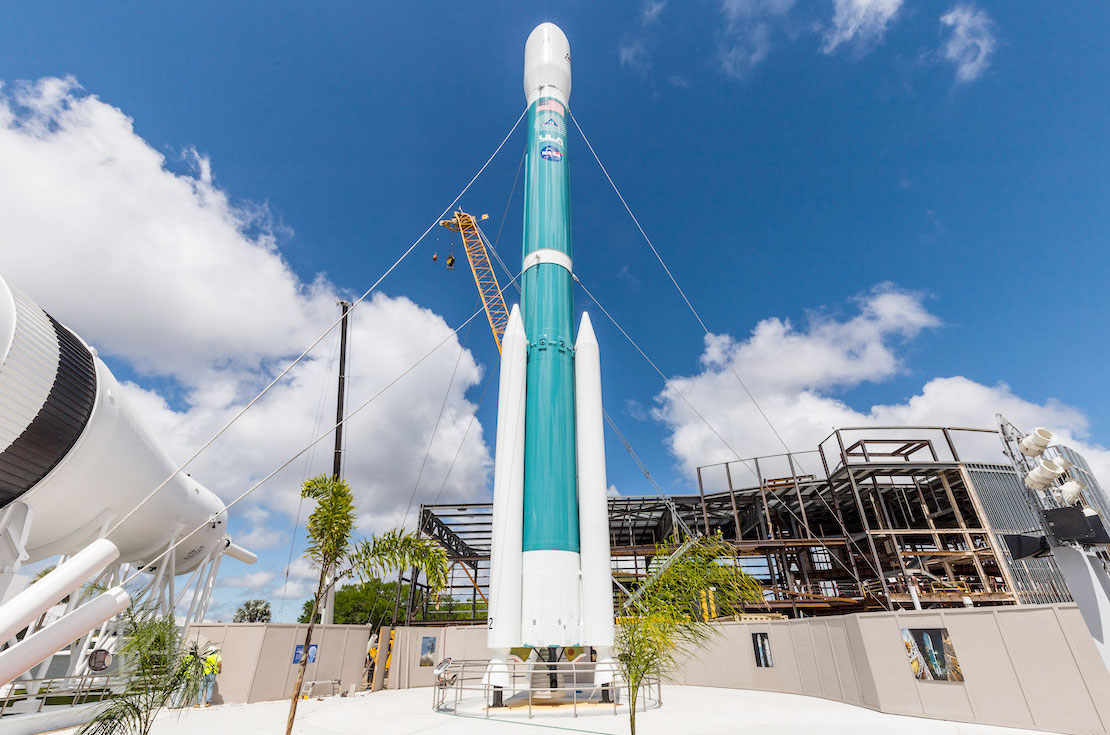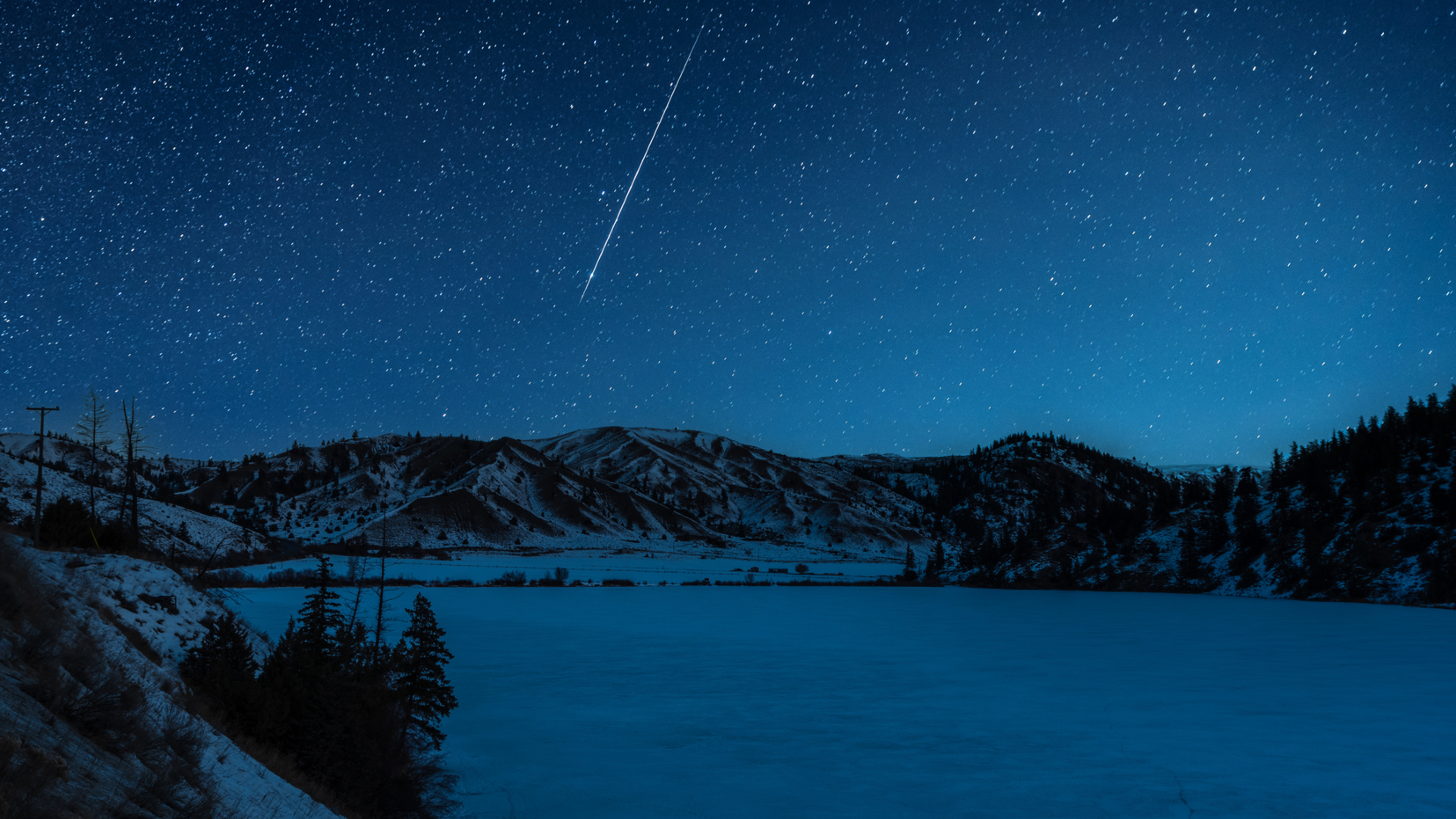Last Delta II takes root in Kennedy Space Center rocket garden
With the arrival of spring, an iconic garden has now sprouted a bright blue new addition — a last-of-its-kind launch vehicle.
The Delta II debuted Tuesday (March 23) in the rocket garden at NASA's Kennedy Space Center Visitor Complex in Florida. The addition of the retired United Launch Alliance (ULA) rocket marked the first "growth" to the visitor complex's collection of historic boosters in many years.
"It has been quite some time since we have been able to put a new rocket in the garden and to have one that is basically very recent is a true highlight," Therrin Protze, chief operating officer of the Kennedy Space Center Visitor Complex, said in an interview with collectSPACE.com. "It looks quite different than the others. It really stands out in its glorious color."
Now standing among the mostly black-and-white rockets from the early years of U.S. space exploration, the Delta II, with its trademark "Delta Blue" finish, represents the industry workhorse that lifted off 155 times — 100 on consecutive successful missions — from 1989 to 2018. The Delta II rocket lofted probes to the moon and to Mars, placed astronomical observatories into Earth orbit and deployed the first Global Positioning System (GPS) satellites.
Video: Watch the last Delta II rocket launch a NASA satellite
"The Delta II on display represents a launch vehicle that really satisfied a lot of capabilities for the world," said Ron Fortson, director and general manager of launch operations for ULA. "For space exploration, it launched a lot of missions to Mars: two rovers, Spirit and Opportunity; Mars Odyssey; and the Phoenix lander, all launched on Delta II. There is so much science that we have learned because of the Delta II."
"Then from a military perspective, GPS is huge. I can't imagine the world being without GPS and essentially Delta launched the constellation," Fortson said. "And from the commercial perspective, there were Iridium satellites, Global Star and Digital Globe. There are a lot of commercial communication [capabilities] that were provided by the Delta II."
Breaking space news, the latest updates on rocket launches, skywatching events and more!
The Delta II's three primary customers — NASA, the military and commercial industry — are represented by the rocket's three side-mounted boosters (the Delta II flew with up to nine of the solid fuel strap-ons). The boosters, as well as the single RS-27A main engine, are the only components of the new exhibit that are replicas. The remainder of the rocket is comprised of hardware that was leftover at the end of the Delta II program.
Looking up at the 132-foot-tall (40 meters) Delta II, visitors to the Kennedy Space Center will see the "shark's teeth" nose art on the rocket's fairing.
"It is really a tribute to the Flying Tigers during World War II," Fortson told collectSPACE, referring to the American volunteer pilots who helped defend China from Japan. "It is also symbolic of the 45th Space Wing [based at Cape Canaveral Space Force Station], taken from their mascot, which they call the "Snark Shark." It has been part of the history, with the 45th Space Wing being here, to have that on the fairing." All Delta II GPS launches included the shark's teeth artwork.
The Delta II now stands in the garden nears the nose of the Apollo-era Saturn IB, the next most recent rocket among the displays. The Delta II's RS-27 engine shares a heritage with the H-1, which powered the main stages of the Saturn IB.
In Photos: Last Delta II Rocket Soars With NASA's ICESat-2
The other rockets exhibited in the garden include the Juno I, Juno II, Atlas-Agena, Mercury-Redstone, Mercury-Atlas and Gemini-Titan II. Also displayed is a Thor-Delta, the first member of the Delta rocket family dating back to 1960. The Delta II was the last of the Delta rockets to fly using hardware with a direct lineage to the original Thor ballistic missile.
ULA first pledged the Delta II to the Kennedy Space Center Visitor Complex less than an hour after the last Delta II to launch left the ground. The rocket was prepared for its outdoor display by Penwal Industries before being shipped cross-country by truck. The first pieces arrived in Florida in late February.
"The coordination with ULA has just been outstanding," said Protze. "ULA did a great job working with their subcontractors to make the Delta II truly sparkle in the rocket garden."
"That blue rocket out there, it really changed world," Fortson said.
Follow collectSPACE.com on Facebook and on Twitter at @collectSPACE. Copyright 2021 collectSPACE.com. All rights reserved.

Robert Pearlman is a space historian, journalist and the founder and editor of collectSPACE.com, a daily news publication and community devoted to space history with a particular focus on how and where space exploration intersects with pop culture. Pearlman is also a contributing writer for Space.com and co-author of "Space Stations: The Art, Science, and Reality of Working in Space” published by Smithsonian Books in 2018.
In 2009, he was inducted into the U.S. Space Camp Hall of Fame in Huntsville, Alabama. In 2021, he was honored by the American Astronautical Society with the Ordway Award for Sustained Excellence in Spaceflight History. In 2023, the National Space Club Florida Committee recognized Pearlman with the Kolcum News and Communications Award for excellence in telling the space story along the Space Coast and throughout the world.



